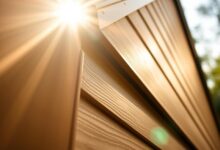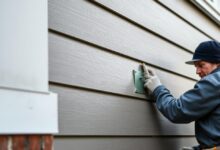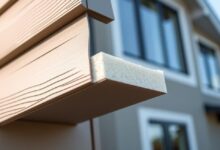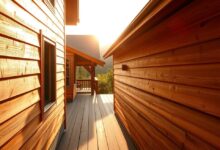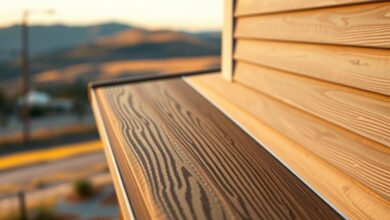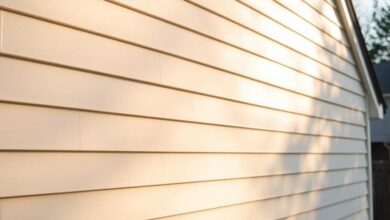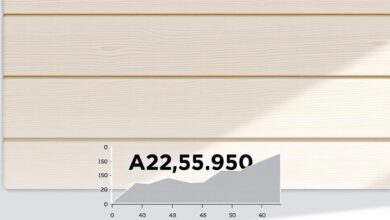Durable Long-Lasting Insulated Siding for Your Home
Looking to make your home’s exterior better and save on energy? Durable siding is a smart choice. It protects your home from the weather and keeps it warm and cozy, cutting down on energy costs.
Insulated siding makes your home quieter and more comfortable. It gives your home a strong exterior and helps keep the temperature right, whether it’s cold or hot outside.
Discover how long lasting insulated siding can boost your home’s look and value. It’s a smart investment for your home’s future.
Key Takeaways
- Improved energy efficiency
- Enhanced durability and protection
- Increased home value
- Quieter living space
- Better resistance to weather conditions
Understanding Insulated Siding: What Sets It Apart
Insulated siding might seem complex, but it’s actually quite simple. It combines the strength of traditional siding with insulation. This makes it a durable and energy-saving choice for homes.
Insulated siding has several key parts that work together. Let’s explore what makes it special.
The Structure and Components of Insulated Siding
Insulated siding has multiple layers. It has a foam insulation core between an exterior material like vinyl and a backing. This setup boosts its thermal performance, cutting down on heat loss.
- A durable exterior layer that protects against weather conditions
- A foam insulation core that reduces heat transfer and energy consumption
- A backing material that adds stability and support
How Insulated Siding Differs from Traditional Options
Insulated siding is different from traditional siding. It offers enhanced energy efficiency and improved durability. Homeowners get a more stable indoor climate, lower energy bills, and a quieter home.
Choosing insulated siding can save money in the long run. It also makes homes more comfortable and increases their value. With many siding materials to choose from, homeowners can find the perfect fit for their needs.
Benefits of Insulated Siding for Homeowners
Insulated siding is a great upgrade for homes. It makes living more comfortable, energy-efficient, and quieter. Homeowners enjoy these benefits.
Enhanced Energy Efficiency and Cost Savings
Insulated siding boosts energy efficiency. It keeps the inside temperature steady. This means lower energy bills.
The U.S. Department of Energy says it can save up to 30% on energy costs.
Improved Home Comfort Year-Round
It also keeps your home cozy all year. In winter, it keeps warmth in. In summer, it keeps heat out.
This makes your home a cozier living space no matter the weather. A study found that well-insulated homes are more comfortable.
Noise Reduction and Structural Support
Insulated siding also reduces noise pollution. It acts as a barrier to outside sounds. Plus, it adds structural support to your home.
This makes your home more durable against weather damage. A homeowner said, “I noticed less outside noise and a better look after installing insulated siding.”
In summary, insulated siding is a smart choice. It boosts energy efficiency, comfort, and durability in your home.
Types of Long-Lasting Insulated Siding Materials
Choosing the right insulated siding for your home is key. It affects your home’s energy use, how long it lasts, and its look.
Vinyl Insulated Siding Options
Vinyl insulated siding is a top pick for many. It’s tough and easy to care for. It also keeps your home warm or cool well.
Popular Vinyl Brands and Products
CertainTeed and Owens Corning are well-known for their vinyl siding. They have many styles and colors to match your home’s look.
Fiber Cement Insulated Products
Fiber cement siding is strong and lasts long. It’s made from cement, sand, and wood fibers. It’s great for any weather and keeps pests and fire away.
Engineered Wood with Insulation
Engineered wood siding is made from wood fibers and adhesives. It’s green and saves energy. It looks and feels like real wood but insulates well.
Each material has its own benefits. Your choice depends on what you like, how much you want to spend, and what you need.
Factors That Contribute to Long-Lasting Insulated Siding
The durability of insulated siding depends on several factors. These include the material’s properties and how well it resists weather. Homeowners should think about these when choosing siding to last long and handle environmental challenges.
Material Quality and Durability Ratings
The material used in insulated siding is key to its lasting power. High-quality materials are made to be tough and less likely to get damaged. Durability ratings from manufacturers help homeowners see how well a siding can handle different weather conditions. It’s important to pick siding with high ratings for durability.
R-Value and Insulation Performance
The R-value shows how well insulated siding keeps a home warm or cool. A higher R-value means better insulation. It’s important to choose siding with the right R-value for your area to save energy and stay comfortable.
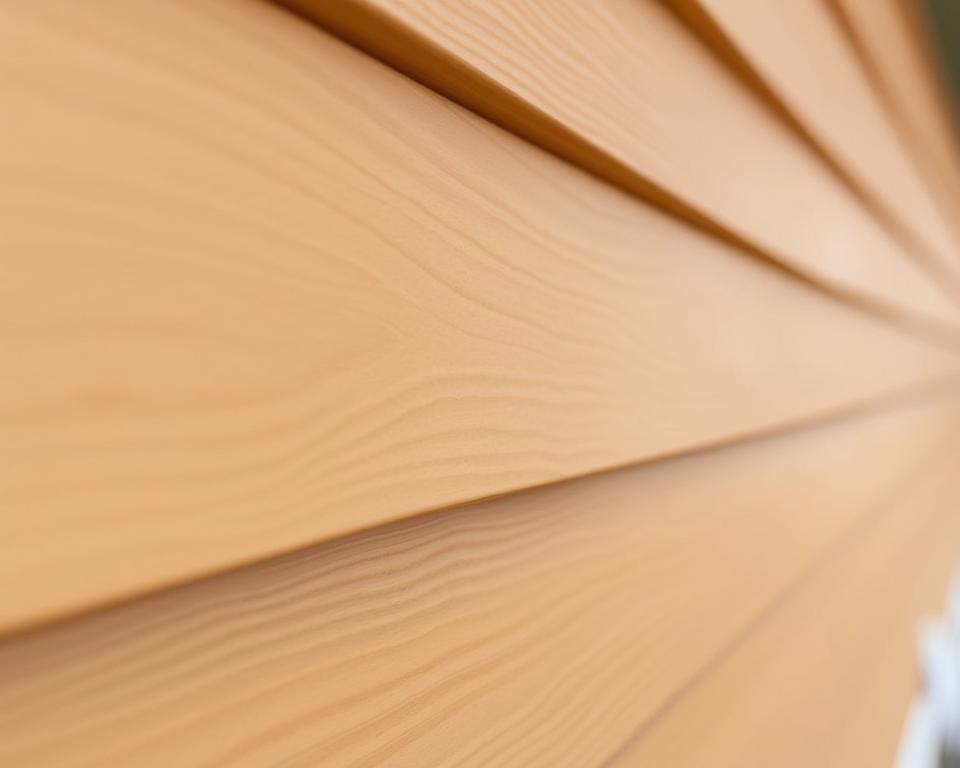
Weather Resistance Features
Insulated siding must be able to stand up to weather to last long. Features like weather-resistant barriers and coatings help it fight off rain, snow, and extreme temperatures. It also needs to handle wind and impacts well.
UV Protection and Color Retention
UV protection is also important because sunlight can cause siding to fade or break down. Siding with UV protection or color retention keeps looking good longer. This means you won’t need to replace it as often.
By considering these important factors, homeowners can find insulated siding that boosts their home’s energy efficiency and comfort. It will also last a long time.
Installation and Maintenance for Maximum Lifespan
To make insulated siding last longer, you need to think about how it’s installed and maintained. Getting it installed right and keeping it up can really help it last. This makes a big difference in how well it works over time.
Professional Installation Best Practices
Getting a pro to install your insulated siding is key to its long life. Experienced installers know how to handle different types of siding. They make sure it’s put on right, fastened well, and sealed tight to keep water out. Always follow the maker’s instructions to keep the warranty valid.
Seasonal Maintenance Requirements
Keeping your insulated siding in good shape is important. Clean it every year to get rid of dirt and check for damage after bad weather. Also, make sure the finish is good. These small steps can stop big problems from happening.
| Season | Maintenance Task | Frequency |
|---|---|---|
| Spring | Inspect for damage, clean siding | Annually |
| Summer | Check for signs of wear, touch up finish | As needed |
| Fall | Clear debris, inspect gutters | Annually |
Addressing Damage and Repairs
Fixing any damage to your insulated siding quickly is important. Cracks, dents, or gaps need to be fixed fast. For big problems, it’s best to get a pro to make sure it’s done right.
Conclusion: Investing in Your Home’s Future with Quality Insulated Siding
Choosing long lasting insulated siding is a smart move. It makes your home more comfortable, energy-efficient, and valuable. Knowing the benefits and types of insulated siding helps homeowners make the right choice for their home’s exterior.
Quality siding cuts down on energy costs and is durable and easy to maintain. Upgrading or replacing siding with quality insulated siding is a smart investment. It offers long-term benefits for your home.
By picking the right material and getting it installed by pros, you get a cozy, energy-saving home. This also increases your home’s appeal and value. Investing in home improvements like insulated siding is a step towards a more sustainable and comfortable future.
